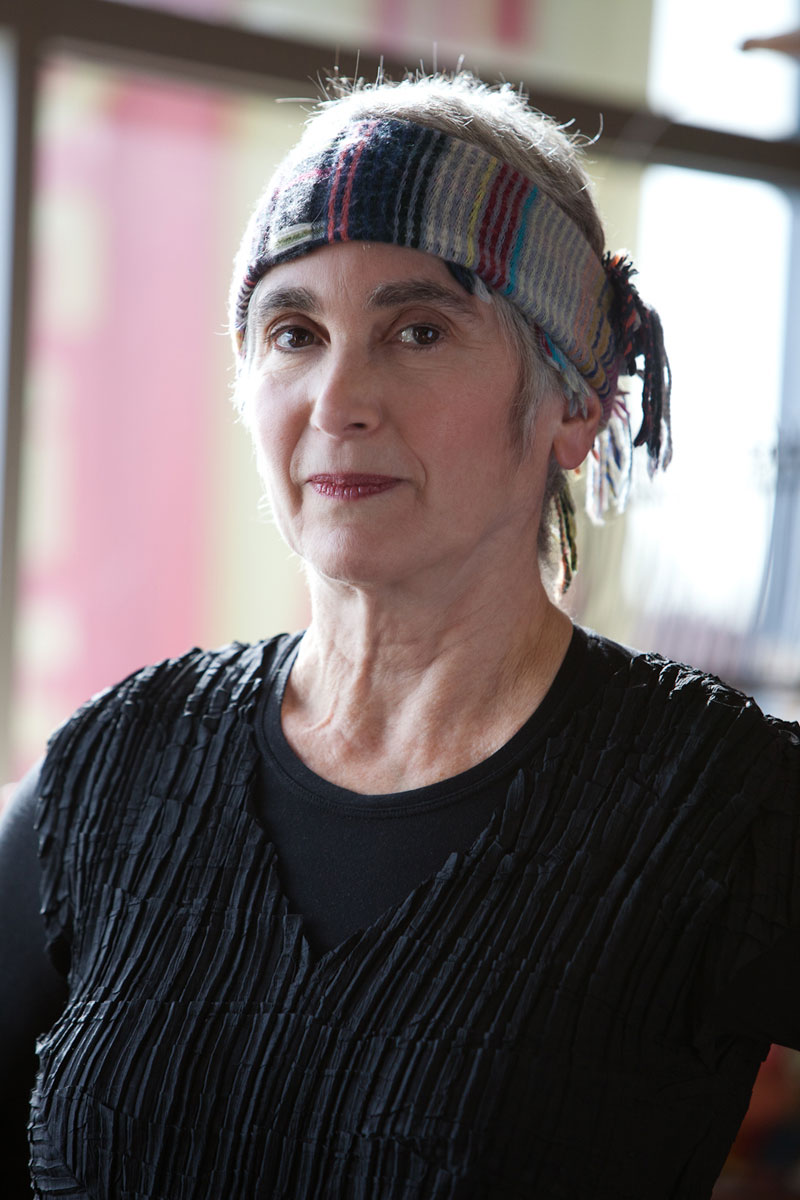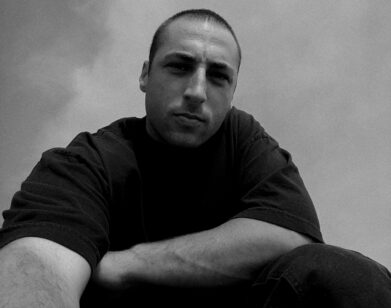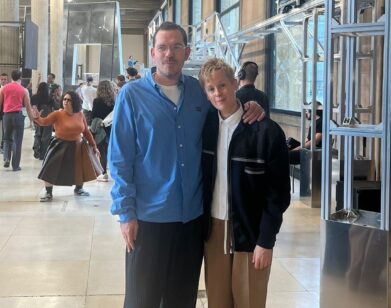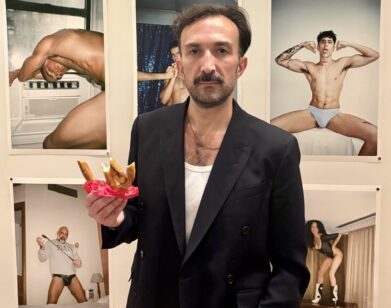How to Buy a Baldessari for $250
For the Santa Monica Museum of Art’s upcoming gala celebrating Elsa Longhauser’s tenth year as director, the museum is raising the stakes on traditional art-party fare: there’s much more to see here than just Champagne and hors d’oeuvres. The event, titled “The Power of Ten” (which refers both to Longhauser’s anniversary and to ten adjectives the museum feels capture its essence), features twenty-five new original works by major artists—think Raymond Pettibon, John Baldessari, Barbara Kruger. But there will be no auction: each guest is entered in a raffle for the art just by dint of purchasing a ticket. They’re $300 for two people’s entry and one shot at the raffle; additional chances at winning can be purchased for $250 a pop, or a package of 50 chances for $10,000. To keep this in perspective, remember that Baldessari’s auction record is $992,000. We’re just saying.
Even those attendees without Lady Luck on their side won’t be walking away empty-handed: Stephen Keene has created 500 original 24″ x 17″ paintings as party favors for all the guests. (This, too, is an act imbued with a little history: Keene’s exhibition The Miracle Half-Mile, which showed 10,000 paintings he created, was the first at the museum under Longhauser’s tenure.) Top it off with a DJ set by Interview pal Brendan Fowler and food by Lene, and you’ve got an unmissable event for Left Coast art devotees—and Easterners who can find cheap post-holiday plane fare. We caught up with Longhauser this week to discuss The Power of Ten and her time at the museum.
ALEXANDRIA SYMONDS: How did you come up with the idea to organize your event as a raffle?
ELSA LONGHAUSER: We are a small museum that takes the work we do very seriously. And we came up with ten adjectives that define the spirit of our program: intrepid, inventive, authentic, original, et cetera. So we decided that we would go to artists who are connected with the museum—because artists are the central focus of the museum; they’ve always been interested in helping us and being a part of what we do. For example, John Baldessari is the voice of our answering machine.
SYMONDS: Really? That’s so funny.
LONGHAUSER: Yes, so when you call here, John Baldessari says, “Hello, this is John Baldessari, you’ve reached the Santa Monica Museum of Art.” So I felt that it was really a great idea to connect The Power of Ten, which is the name of our event, with the artists directly. And a small museum like ours takes a village: the staff, the board. We sat around and thought, “Okay, there are these 25 artists who’ve agreed to make an original work in response to one of the adjectives, or inspired by one of the adjectives—what would be the best way to make this work available to a broad public?”
The idea of a raffle, or taking a chance, is what appealed to us. So we feel that even though this work is world-class work by an amazing array of iconic artists—like John Baldessari and Edgar Arceneaux and George Herms and Barbara Kruger—we wanted to give the general public an opportunity to be able to purchase this work. So we came up with the idea of the raffle, as I said, and taking a chance, and we wanted to make the work available for a reasonable amount of money. So each raffle ticket is $250. So anybody, in a way, has the opportunity to get a major, major work by very important contemporary artists.
SYMONDS: Could you speak a bit to how you originally developed relationships with some of these artists?
LONGHAUSER: One way, of course, is through doing exhibitions. I have a very strong vision for the museum as a place where we show work by artists who have made a major contribution to the art-historical canon, or are going to be part of the art-historical canon. So I’ve had the great privilege of working with many artists. For example, we did an exhibition called Cave Painting, which was a show that was originated by Laura Owens. And she asked me if she and Peter Doig and Chris Ofili—all of whom are quite world-renowned artists—could be the curators of an exhibition themselves, of their own work. The way that I become close with these artists is by working with them on exhibitions, but also because throughout my career, the artists have been central to my focus. That’s what we do. Do you know what I mean?
SYMONDS: Of course.
LONGHAUSER: I think because the museum’s work is serious, and it’s interesting, and it’s relevant, artists are eager to show with us. And we have a very accessible and approachable staff. Artists get to work with all of the major people in the museum directly. We really work very hard to realize the artists’ vision, which is part of the overall vision of the museum.
SYMONDS: So this event is designed in part to celebrate your tenth year at the museum. How has it changed in that time?
LONGHAUSER: The art world is a very fluid place, and it’s always changing. Los Angeles has changed dramatically in the last ten years: more galleries have moved here, people are very interested in what’s going on. Los Angeles, at one time, was not considered as central to American art history, but today, it really is. People are focusing on the history of art in Los Angeles as part of the greater history of American art.
I think what’s really interesting about Los Angeles is some of the most important artists in the world are from here, have made work about Los Angeles, are inspired by Los Angeles, and they are icons of the global art world—like John Baldessari, Ed Ruscha, Barbara Kruger, Raymond Pettibon. And they’ve always lived here, they’ve always taught here, they’ve always worked here. There’s a very interesting phenomenon, that Los Angeles has always been the home of major, major artists—Michael Asher is another one—and the world hasn’t always given them their due for being in Los Angeles, or of Los Angeles. But now, the world is focusing on Los Angeles as a vital center of the art world. This has happened slowly, but now the light is shining on Los Angeles.
SYMONDS: That must make you happy.
LONGHAUSER: Well, it’s fantastic. It’s a wonderful thing to be at the epicenter of creativity and artistic activity.
SYMONDS: Do you have any particularly special memories from the last 10 years that you’d like to share?
LONGHAUSER: One of the great things about being the director of a small museum is that I get to wear many, many hats. As the director of a small museum, on any given day, one has to be prepared to scrub the floor and meet the Queen—and do both with equal skill and aplomb. I do believe that that defines the role of a museum director of a Kunsthalle, or non-collecting museum. You have to have the agility and the eagerness to respond to ideas and trends and movements as they bubble up in the art-world firmament.
So I am the director, I certainly am responsible for the overall vision, and I’m a curator here. But it does take a village—every staff member here is an essential part of the team. Together, we figure out how to be the most dynamic, intrepid, original, important, authentic, influential museum we possibly can be. We had the opportunities, for example, to work with Michael Asher on his amazing show here, and to work with guest curators who I’ve invited to work here. One of the highlights was having Peter Sellars, the world-renowned director of opera and theater, as the curator of a show about an Ethiopian artist. Or Lynne Cooke, who was the guest curator for the Alfred Jensen show, or Thelma Golden, from the Studio Museum, who organized a very important exhibition called Freestyle in 2000 that came here in 2001. That really focused on the most relevant up-and-coming African-American artists, many of whom today have taken their own places in the canon. Mark Bradford, who lives here and works here, was in that, and he’s been a very good friend to the museum—and a very good friend.
SYMONDS: It sounds like you’ve had a successful decade.
LONGHAUSER: It’s been an exciting ten years. It’s been very diverse, it’s been filled with many different kinds of activity and relationships. One is always learning—it’s an evolutionary process. I think the ten years marks an important moment in that evolution.
THE POWER OF TEN EVENT WILL BE HELD AT THE SANTA MONICA MUSEUM OF ART FROM 4-7 PM ON JANUARY 9. TICKETS ARE $300 FOR TWO GUESTS AND ONE CHANCE TO WIN AN ORIGINAL ARTWORK. ADDITIONAL CHANCES MAY BE PURCHASED FOR $250. FOR MORE INFORMATION, VISIT THE MUSEUM’S WEBSITE.







